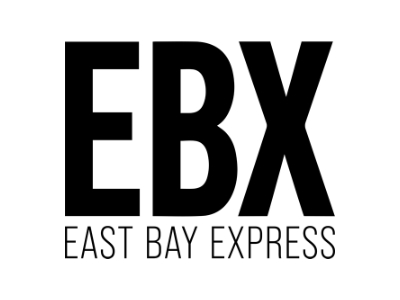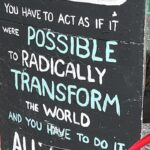Since the Supreme Court ruled against Harvard University and the University of North Carolina’s use of affirmative action as a factor for admissions and against the debt relief program last week, people from across the political spectrum have weighed in on social media, in casual conversations in the grocery store and everywhere in between. The reactions range from outrage to feelings of defeat or acquiescence to feelings of relief and vindication.
One woman, a college admissions counselor, poignantly called out the ruling. “The Supreme Court just voted in favor of white supremacy under the mask of ‘fairness.’ But why not end legacy admissions [which involve admitting] students who are disproportionately white, or early decision agreements that benefit full-pay students?”
An IT professional weighed in with sarcasm. “I’m sure the 16 million Americans who effectively became 10s of thousands of dollars poorer this weekend due to the Supreme Court’s ruling will be celebrating extra hard this Independence Day? But, hey, they also legalized lgbt discrimination by businesses so freedom, right?”
Others posted things like “About time,” or congratulated the court for doing away with “reverse discrimination.” My sweet 88-year-old neighbor invited me over for a glass of wine and shared that she’s giving up news when she relocates to Florida, because it’s just too much. I leaned in with curiosity, thinking perhaps even she was outraged. It turns out that she was relieved because she shared that she doesn’t like freebies and she doesn’t like things that are unfair. She even brought up reparations in the conversation. Her ancestors migrated here from Yugoslavia nearly 100 years ago with nothing, and nobody handed them anything. This is just one example, but my neighbor certainly isn’t an anomaly in her thinking.
What’s missing from the sort of flippant “get over it” or “not fair” mentality is context, nuance—an understanding of intersectionality and an acknowledgement of the depths of white supremacy and its entanglement with misogyny.
If we don’t pay attention to the different ways in which our ancestors “migrated” to the United States or, in the words of Mamanda Ngozi Adichie, “single story” their narratives, we’re overlooking the element of freewill or lack-thereof. In doing this, we’re grouping together the narratives of people who came to the U.S. for new opportunities, fresh starts or in some cases as a safehaven while fleeing violence, persecution or human rights abuses, with those who were captured, brought to the country against their will and enslaved.
While some came to the United States in search of freedom, we can’t forget that many had their freedom taken from them when they arrived in this county, as they were brought here against their will, where they worked fields, performed manual labor, raised other people’s children—while their own fended for themselves, labored along with them or were sold off—and effectively built the infrastructure of an economy that excluded them. Once the system of slavery ended in the United States, white supremacy and systemic racism didn’t just evaporate, and neither did their ideologies or internalized racism.
Racism is embedded and legislated. It’s ingrained in our language, in our nursery rhymes and even in our food. For example: white cake is called “angel food,” while chocolate or brown cake is called “devil’s food cake.” It’s so embedded that sometimes it hides in plain sight or blends into the background as “normal.”
The NAACP recognizes that even modern-day policing has roots in the 1700s, when it was used in the Carolinas with the mission of “squash(ing) slave people’s uprisings with the capacity to purse, apprehend and return runaway ‘slaves’ to their ‘owners,’ using tactics of excessive force.” Today the mechanism of policing is different in that it is no longer associated with returning humans to other humans, but it still has many people—particularly Black and brown people or people of any background with mental health challenges—somewhat on edge and fearful.
While people can no longer legally be enslaved, many live in cages. About 1.7 million people have been incarcerated in the United States this year, most of whom are non-violent offenders and many of whom struggle with mental health conditions or addictions. And the poorest of them will not have the funds to make bail. One-fourth of them will also end up back in prison, in part because they carry the weight of the felon asterisk after their name, making it difficult for them to find a place to live and work in the free world, and in some cases because they didn’t have access to the tools and infrastructure necessary to get an education. This is the country we live in.
In the 6-3 majority ruling to overturn the use of affirmative action as a factor of consideration for admittance into two prominent universities, Chief Justice John Roberts made this statement: “Many universities have for too long wrongly concluded that the touchstone of an individual’s identity is not challenges bested, skills built, or lessons learned, but the color of their skin. This Nation’s constitutional history does not allow that choice.” These words suggest that race is the single deciding factor of admittance to college, when in fact it is meant to give folks a fighting chance to be considered. They also suggest that the constitution assumes that equality has already been reached and so therefore any inclusionary protocols would amount to unearned giveaways.
And to make sure there are no giveaways, the Supreme Court also overturned President Biden’s college debt forgiveness bill. This ruling promises to keep millions of Americans working in fields like education, nursing and various other trades in debt. We’ve likely all noticed folks credentialing themselves or patting themselves on the back for not being in debt either because their parents helped them pay, they worked a few jobs to get it done or they already paid back their loans. The mentality seems to be, “If I could do it, why can’t everyone else?” Although the question is posed rhetorically, the answer is that everyone has different circumstances and a one-size-fits-all approach simply doesn’t work.
As I’ve covered incidents of police-involved violence, gender-based violence, mass incarceration and education over the years, I have observed that deep beneath the layers is often a mom who was unsupported by a system, who worked several jobs to support her kids, who set aside getting her own education or the pursuit of her own dreams because she didn’t have the time or the money. What if we saw the act of providing resources to help someone in this situation sustain their family and pursue an education not as a wasted freebie, but rather as an investment with the potential for return on the investment? It would perhaps allow for a mom to be with her children so that they didn’t have to fend for themselves while she worked minimum-wage jobs, and maybe even curb issues such as intergenerational mass incarceration.
When we push forth anti-choice legislation, take away inclusionary measures and remove debt-relief options while also taking a unilateral stance against “freebies” or social support mechanisms, we put American families in an impossible situation, where the freedom that we are guaranteed in the Constitution becomes less and less attainable. To truly better the system, we need not only affirmative action, but strong supportive infrastructure programs to help students navigate high school and find their way to and through college. We need more resources and programs, not fewer.
To show how the historical system of slavery relates to modern-day educational access, the carceral system and debt, I’ll draw from the experiences of George Perry Floyd and his relatives and ancestors.
Floyd’s great-grandfather was born a slave. Floyd’s grandmother became a mom at the age of 14 and married a man significantly older than her. Floyd’s grandparents spent their entire lives working as sharecroppers, working off their debt in the fields. His mother was one of 14 children, who struggled to raise Floyd and his four siblings as a single mom in the projects of Houston. He was the first of his siblings to graduate high school and make it to college. Once he was in college, he was a bit like a fish out of water.
Floyd took time off to help his mom and tried to make fast money in the only way that worked in his neighborhood, which led to his own experimentation-turned-addiction that he struggled his whole life to overcome. Floyd spent time in and out of prison, and relapsed like 90% of people struggling with addiction do, before he was ultimately killed in a manner that Cornel West defined as a modern day lynching—under the knee of a white man named Derek Chauvin.
George Floyd’s aunt and family members will tell you that George Floyd didn’t die for nothing, but rather for the freedom that so many Americans, specifically those with Black and brown skin, yearn for. Although we can never undo what’s been done, we can change the trajectory of our future by learning about our history.
If we look back and use our collective imagination, can we imagine how George Floyd’s life might have played out differently if his ancestral roots weren’t embedded in slavery and sharecropping? If his mother had had access to support? If he and the past three generations of his family had been presented with access to an education? In that world, George Floyd might have finished up his career living out his American Dream as a professional basketball player, or he might still be fulfilling his childhood dream that his Aunt Angela Harrelson revealed in an interview: of sitting on the bench as a Supreme Court judge, making policies that further the agenda of freedom and the prospect of equality for all.


